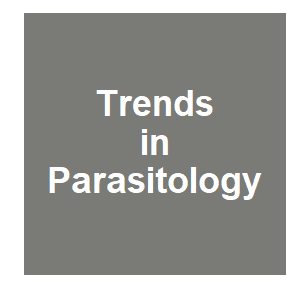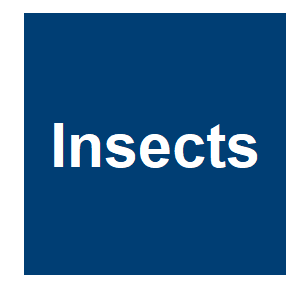
Keywords: RNAi

|
Current Status of the Main Olive Pests: Useful Integrated Pest Management Strategies and Genetic ToolsE. Lantero, B. Matallanas and C. Callejas, Applied Sciences, 13. 2023.
Mediterranean olive cultivation faces challenges in the global environmental change context. Pests and diseases caused by arthropods such as Bactrocera oleae, Prays oleae, and certain vectors of Xylella fastidiosa are expected to increase and spread in part due to this global ... Keywords: fertility control, Gene-silencing, genetic biocontrol, interfering RNA, RNAi, toxicant, vertebrates |

|
Mosquito gene targeted RNAi studies for vector controlM. Yadav, N. Dahiya and N. Sehrawat, Functional and Integrative Genomics, 23:180. 2023.
Vector-borne diseases are serious public health concern. Mosquito is one of the major vectors responsible for the transmission of a number of diseases like malaria, Zika, chikungunya, dengue, West Nile fever, Japanese encephalitis, St. Louis encephalitis, and yellow fever. ... Keywords: fertility control, Gene-silencing, genetic biocontrol, interfering RNA, RNAi, toxicant, vertebrates |

|
Cross-kingdom RNAi to enhance the efficacy of insect pathogensS. Asgari, Trends in Parasitology, 2022.
Insect pathogens play significant roles in the biocontrol of medical and agricultural pests. Cui et al. demonstrated that genetically modified (GM) fungi expressing host mosquito miRNAs could enhance the efficacy of the fungus by suppressing the host immune response. This opens ... Keywords: fertility control, Gene-silencing, genetic biocontrol, interfering RNA, RNAi, toxicant, vertebrates |

|
Engineering RNA Interference-Based Dengue Virus Resistance in the Mosquito Vector Aedes aegypti: The Current Status and Future DirectionsS. D. Denipitiyage, Y. I. N. S. Gunawardene, Z. Federico and R. S. Dassanayake, Genetically Modified and other Innovative Vector Control Technologies, 2021.
Dengue is an acute, febrile disease caused by the dengue viruses (DENV) comprising four serotypes and transmitted by the mosquito vector Ae. aegypti. DENV are single-stranded, positive-sense RNA viruses of the family Flaviviridae. Dengue is declared as a current significant ... Keywords: fertility control, Gene-silencing, genetic biocontrol, interfering RNA, RNAi, toxicant, vertebrates |

|
Gene drive and RNAi technologies: a bio-cultural review of next-generation tools for pest wasp management in New ZealandS. Palmer, P. K. Dearden, O. R. Mercier, A. King-Hunt and P. J. Lester, Journal of the Royal Society of New Zealand, 1-18. 2021.
There is a global need for novel, next-generation technologies and techniques to manage pest species. We review work on potential step-changing technologies for large landscape (>1000 hectares) pest management of social Vespula wasps. We also review M?ori perspectives on these ... Keywords: fertility control, Gene-silencing, genetic biocontrol, interfering RNA, RNAi, toxicant, vertebrates |

|
Persistent Spodoptera frugiperda rhabdovirus infection in Sf9 cells is not restricted by Wolbachia wMelPop-CLA and wAlbB strains and is targeted by the RNAi machineryR. Parry, H. de Malmanche and S. Asgari, Virology, 563:82-87. 2021.
The endosymbiotic bacterium Wolbachia pipientis confers RNA virus refractoriness in Drosophila and Aedes mosquitoes. Questions remain about the Wolbachia-virus restriction phenotype and how extensive this phenomenon may be within other arthropods. Here, we generated two ... Keywords: fertility control, Gene-silencing, genetic biocontrol, interfering RNA, RNAi, toxicant, vertebrates |

|
New Pesticides Will Modify Insect Genes: What Could Go Wrong?Food Tank, EcoWatch, 2021.
Farmers across the U.S. could soon fill their pesticide spray tanks with a substance known as interfering RNA (RNAi). (RNA is a molecule similar to DNA.) Insects that are exposed to it — either by eating crops sprayed with the substance or by landing on a crop and absorbing it ... Keywords: fertility control, Gene-silencing, genetic biocontrol, interfering RNA, RNAi, toxicant, vertebrates |

|
RNAi-based products: A sustainable alternative to hazardous pesticidesGhent University, Phys Org, 2021.
RNAi-based biocontrol is a great alternative to hazardous pesticides and can contribute towards reversing the alarming decline in farmland birds and beneficial insects (especially pollinating ones). RNAi is a well-known natural biological process in most Keywords: fertility control, Gene-silencing, genetic biocontrol, interfering RNA, RNAi, toxicant, vertebrates |

|
The Antiviral Small-Interfering RNA Pathway Induces Zika Virus Resistance in Transgenic Aedes aegyptiA. E. Williams, I. Sanchez-Vargas, W. R. Reid, J. Y. Lin, A. W. E. Franz and K. E. Olson, Viruses, 12:18. 2020.
We used CRISPR/Cas9 to re-target a previously characterized locus (Chr2:321382225) and engineered mosquitoes expressing an inverted repeat (IR) dsRNA against the NS3/4A region of the ZIKV genome. Small RNA analysis revealed that the IR effector triggered the mosquito's siRNA ... Keywords: fertility control, Gene-silencing, genetic biocontrol, interfering RNA, RNAi, toxicant, vertebrates |

|
RNAi: Applications in Vertebrate Pest ManagementK. E. Horak, Trends in Biotechnology, 38:1200-1202. 2020.
the development of novel control technologies must be focused on species specificity and low environmental impact. Sequence-specific gene silencing via RNAi holds promise for effective management of pest wildlife. Keywords: fertility control, Gene-silencing, genetic biocontrol, interfering RNA, RNAi, toxicant, vertebrates |

|
The Y Chromosome as a Battleground for Intragenomic ConflictD. Bachtrog, Trends in Genetics, 2020.
Recurrent sex chromosome drive can have profound ecological, evolutionary, and cellular impacts and account for unique features of sex chromosomes. Keywords: fertility control, Gene-silencing, genetic biocontrol, interfering RNA, RNAi, toxicant, vertebrates |

|
Male-biased adult production of the striped fruit fly, Zeugodacus scutellata, by feeding dsRNA fpecific to Transformer-2M. A. Al Baki, M. Vatanparast and Y. Kim, Insects, 11:211. 2020.
Sterile insect release technique (SIT) is effective for eradicating quarantine insects including various tephritid fruit flies. When SIT is used for fruit flies, it is challenging to remove females from sterile males due to oviposition-associated piercing damage. This study ... Keywords: fertility control, Gene-silencing, genetic biocontrol, interfering RNA, RNAi, toxicant, vertebrates |

|
Herbicide resistant weeds: A call to integrate conventional agricultural practices, molecular biology knowledge and new technologiesV. E. Perotti, A. S. Larran, V. E. Palmieri, A. K. Martinatto and H. R. Permingeat, Plant Science, 290:110255. 2019.
Herbicide resistant (HR) weeds are of major concern in modern agriculture. This situation is exacerbated by the massive adoption of herbicide-based technologies along with the overuse of a few active ingredients to control weeds over vast areas year after year. Also, many other ... Keywords: fertility control, Gene-silencing, genetic biocontrol, interfering RNA, RNAi, toxicant, vertebrates |

|
Herbicide resistant weeds: A call to integrate conventional agricultural practices, molecular biology knowledge and new technologiesV. E. Perotti, A. S. Larran, V. E. Palmieri, A. K. Martinatto and H. R. Perrningeat, Plant Science, 290:15. 2019.
Herbicide resistant (HR) weeds are of major concern in modern agriculture. This situation is exacerbated by the massive adoption of herbicide-based technologies along with the overuse of a few active ingredients to control weeds over vast areas year after year. Also, many other ... Keywords: fertility control, Gene-silencing, genetic biocontrol, interfering RNA, RNAi, toxicant, vertebrates |

|
CRISPR gene drive efficiency and resistance rate is highly heritable with no common genetic loci of large effectChamper, JW, Z. X.; Luthra, A.; Reeves, R.; Chung, J.; Liu, C.; Lee, Y. L.; Liu, J. X.; Yang, E.; Messer, P. W.; Clark, A. G., Genetics, 212:333-341. 2019.
Gene drives could allow for control of vector-borne diseases by directly suppressing vector populations or spreading genetic payloads designed to reduce pathogen transmission. Clustered regularly interspaced short palindromic repeat (CRISPR) homing gene drives work by cleaving ... Keywords: fertility control, Gene-silencing, genetic biocontrol, interfering RNA, RNAi, toxicant, vertebrates |

Contact
David O’Brochta
Foundation for the
National Institutes of Health
geneconvenevi@fnih.org
RSS

